Creating and Configuring a new Dimodelo Data Warehouse Studio Project
Dimodelo Data Warehouse Studio is a plug-in for Visual Studio 2015 or 2019 with a preference for 2019. It is simply a new custom project type in Visual Studio. You can create a Dimodelo Data Warehouse Studio project the same way you create any other Visual Studio Project.
Visual Studio 2019
- Open Visual Studio 2019.
- On the Open/Get Started menu Click “Create a new project”.
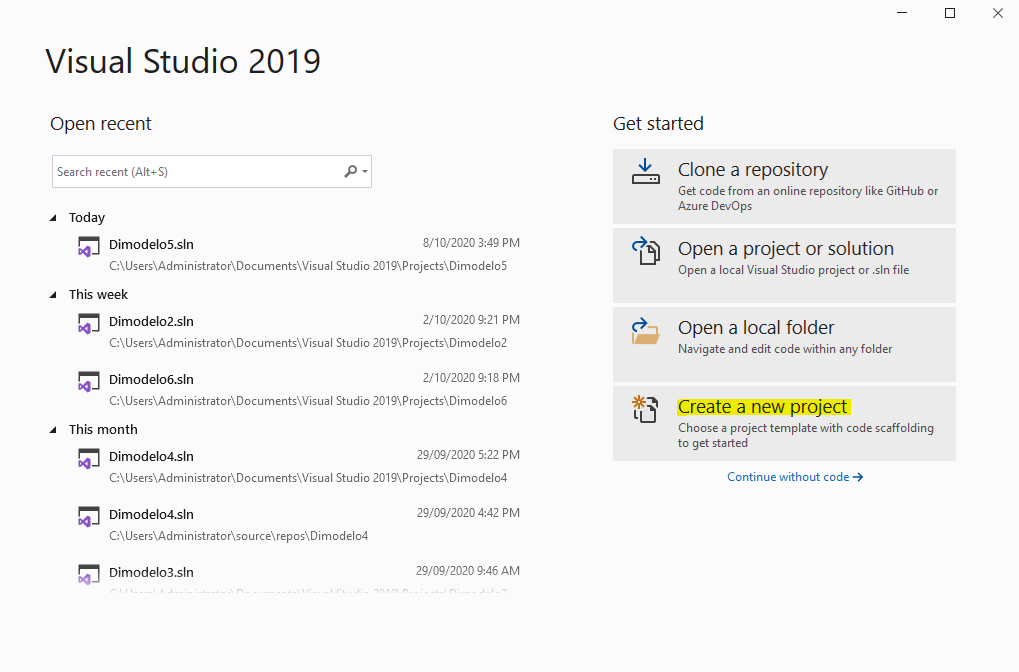
- In the search box, type “Dimodelo”. Select “Dimodelo” in the project templates list.
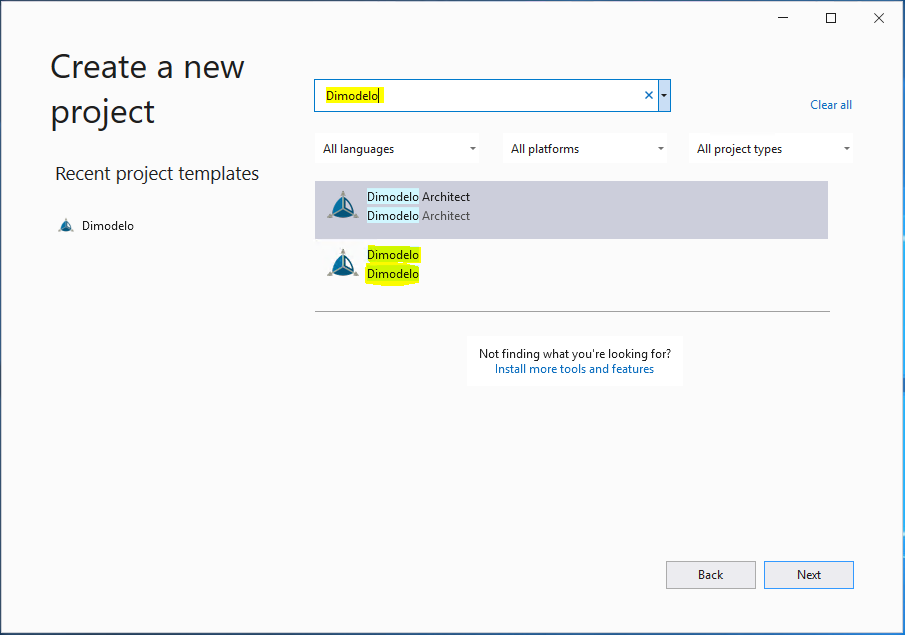
- Give the project the Name “Training” and choose the Location to store the project files. Click Create. The “Select Data Warehouse Architecture” dialog appears.
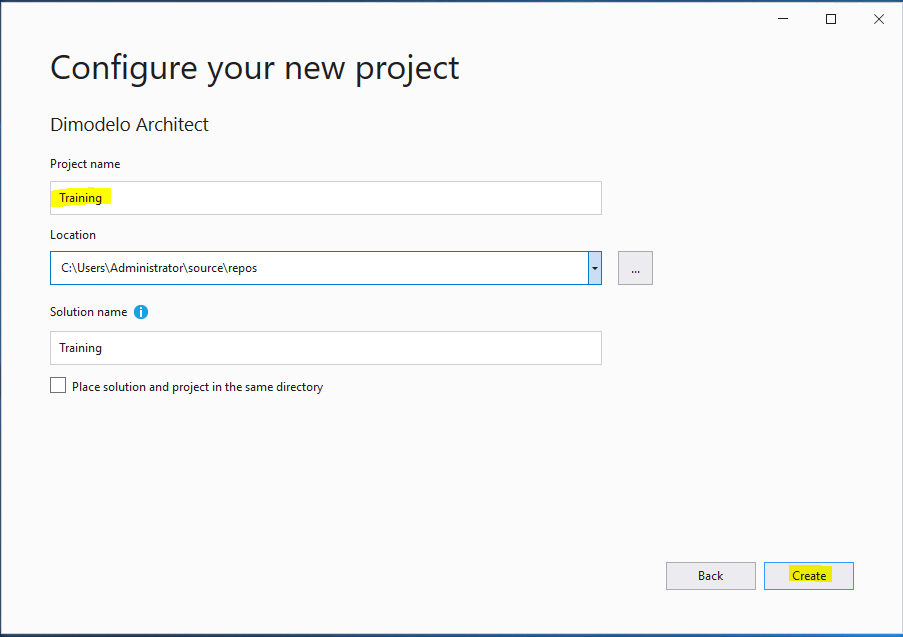
- In the “Select Data Warehouse Architecture” dialog first, select the Information Architecture you want to implement. At this stage, there is only one.
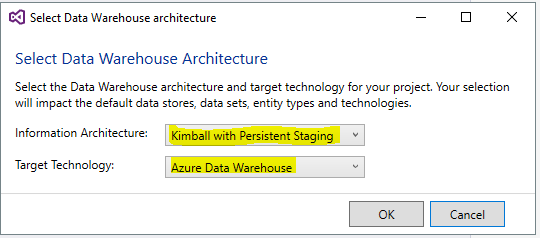
- Next, select the Target technology for your data warehouse. In this case select “Azure Data Warehouse“. Alternatively, if you prefer to target the SQL Server platform (which is easier to configure for the purposes of this tutorial) select “SQL Server“.
- Click Ok.
Note: Dimodelo Data Warehouse Studio has the ability to support different Information Architectures (e.g. Kimball Data Warehouse, Data Vault etc). It can also target different data platforms (e.g. Azure Synapse Analytics, Azure SQL Database, SQL Server). Dimodelo Data Warehouse Studio currently only supports the “Kimball with Persistent Staging” Information Architecture. In the future, we plan to add more Information Architectures and let data architects define their own. Also, Dimodelo Data Warehouse Studio only targets the Microsoft Data Platform. In the future, there will be generation templates that target other data platforms by other vendors. This approach makes it easy to migrate your solution to new data platforms.
The Solution Explorer is populated with 3 projects:
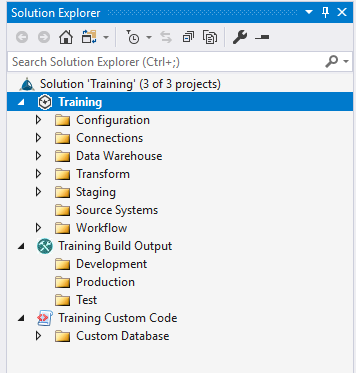
- The first project “Training” is the Dimodelo Data Warehouse Studio project. This is where you capture the design of your data warehouse.
- The second project is the Build Output project. When Dimodelo generates code, it is placed in this project so you can look at it.
- The third project is a Custom Code project. If you want to add any custom code to your solution (e.g. stored procedures, views etc) you can add that code here.
Visual Studio 2015
- Open Visual Studio 2015.
- On the file menu Click New>Project.
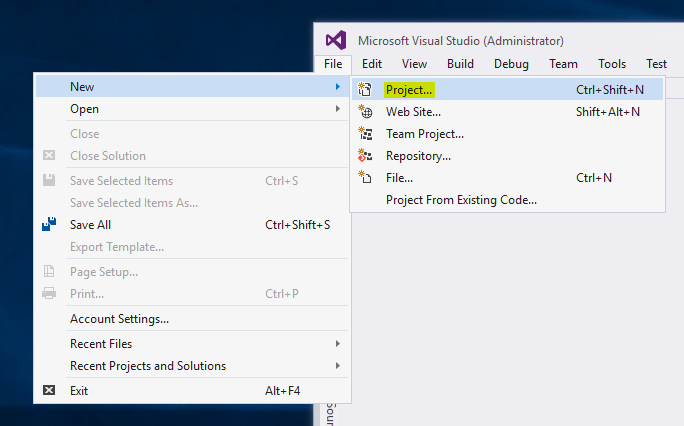
- Select Dimodelo Solutions from the Templates list and then select the Dimodelo Data Warehouse Studio project type. Give the project the Name “Training” and choose the Location to store the project files.
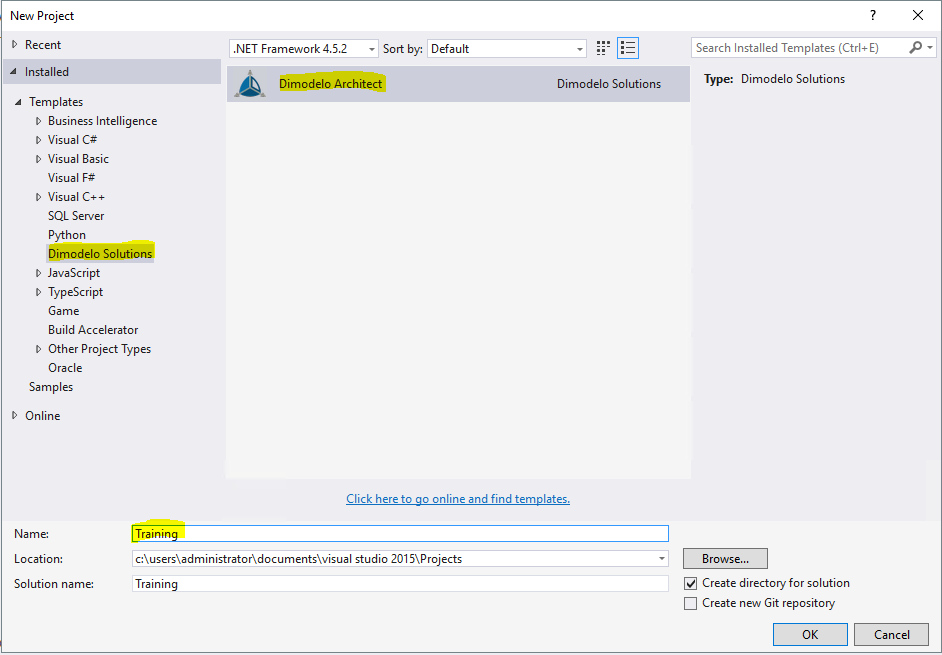
- Click Ok. The “Select Data Warehouse Architecture” dialog appears.
- In the “Select Data Warehouse Architecture” dialog first, select the Information Architecture you want to implement. At this stage, there is only one.

- Next, select the Target technology for your data warehouse. In this case select “Azure Data Warehouse“. Alternatively, if you prefer to target the SQL Server platform (which is easier to configure for the purposes of this tutorial) select “SQL Server“.
- Click Ok.
Note: Dimodelo Data Warehouse Studio has the ability to support different Information Architectures (e.g. Kimball Data Warehouse, Data Vault etc). It can also target different data platforms (e.g. Azure Synapse Analytics, Azure SQL Database, SQL Server). Dimodelo Data Warehouse Studio currently only supports the “Kimball with Persistent Staging” Information Architecture. In the future, we plan to add more Information Architectures and let data architects define their own. Also, Dimodelo Data Warehouse Studio only targets the Microsoft Data Platform. In the future, there will be generation templates that target other data platforms by other vendors. This approach makes it easy to migrate your solution to new data platforms.
The Solution Explorer is populated with 3 projects:
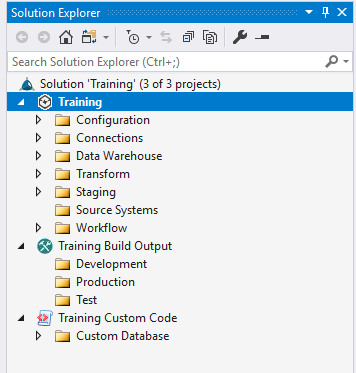
- The first project “Training” is the Dimodelo Data Warehouse Studio project. This is where you capture the design of your data warehouse.
- The second project is the Build Output project. When Dimodelo generates code, it is placed in this project so you can look at it.
- The third project is a Custom Code project. If you want to add any custom code to your solution (e.g. stored procedures, views etc) you can add that code here.
